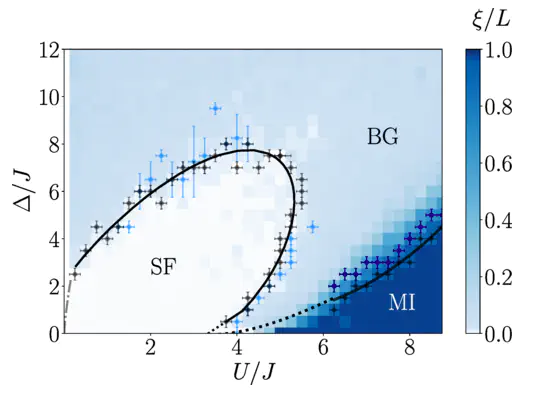Finding the phase diagram of strongly correlated disordered bosons using quantum quenches

Abstract
The question of how the low-energy properties of disordered quantum systems may be connected to exotic localization phenomena at high energy is a key open question in the context of quantum glasses and many-body localization. In the preceding Letter [L. Villa, S. J. Thomson, and L. Sanchez-Palencia, preceding Letter, Phys. Rev. A 104, L021301 (2021)] we have shown that key features of the excitation spectrum of a disordered system can be efficiently probed from out-of-equilibrium dynamics following a quantum quench, providing distinctive signatures of the various phases. Here we extend this work by providing a more-in-depth study of the behavior of the quench spectral functions associated with different observables and investigating an extended parameter regime. We provide a detailed introduction to quench spectroscopy for disordered systems and show how spectral properties can be probed using both local operators and two-point correlation functions. We benchmark the technique using the one-dimensional Bose-Hubbard model in the presence of a random external potential, focusing on the low-lying excitations, and demonstrate that quench spectroscopy can distinguish the Mott insulator, superfluid, and Bose glass phases. We then explicitly reconstruct the zero-temperature phase diagram of the disordered Bose-Hubbard at fixed filling using two independent methods, experimentally accessible via both time-of-flight imaging and quantum gas microscopy, respectively, and demonstrate that quench spectroscopy can give valuable insights into the distribution of rare regions within disordered systems.